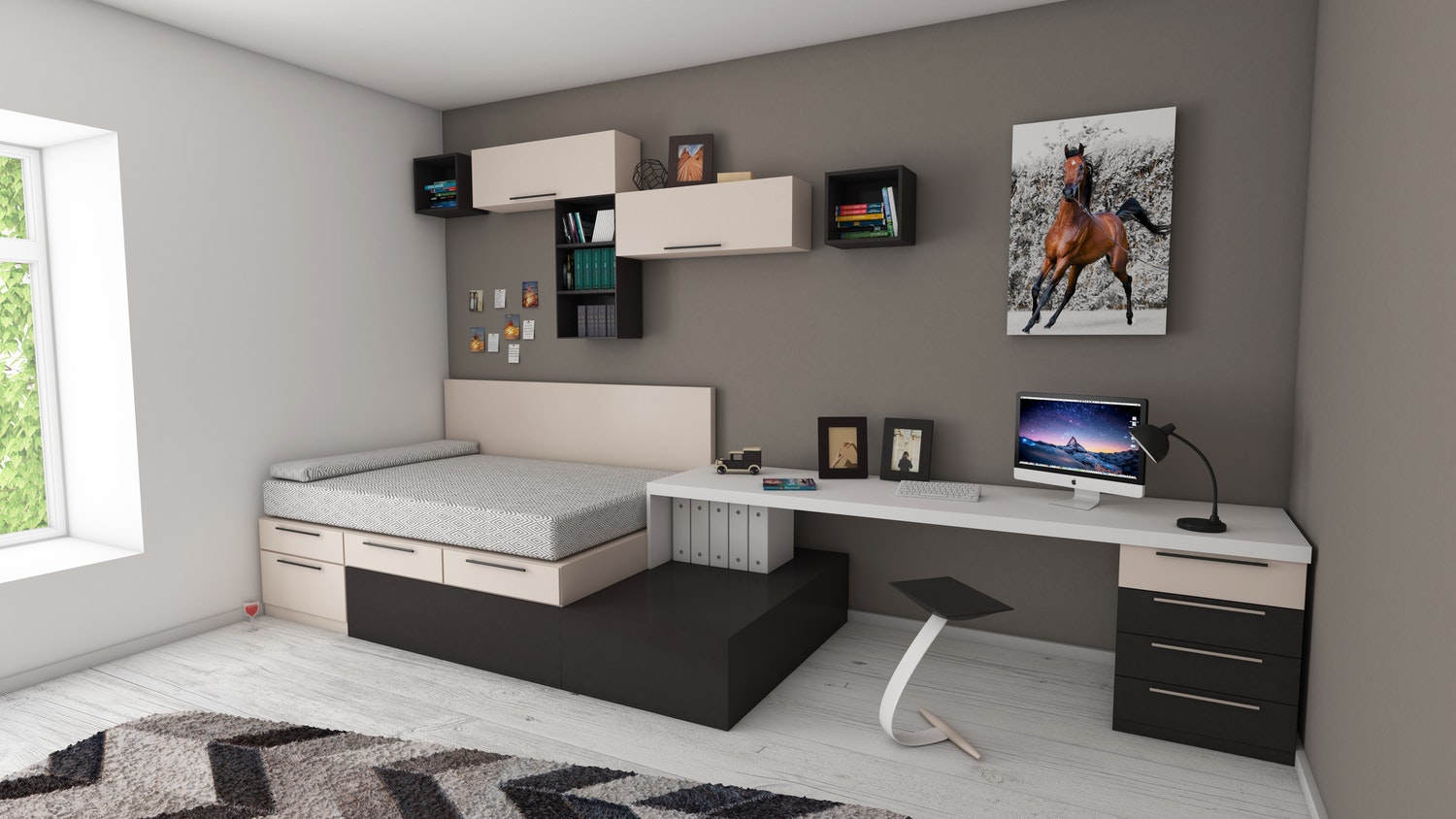Living in a small space is challenging in some unique ways. For instance, you need to come up with creative storage solutions and find décor that won’t make you feel like you live in a box. Whether you live in a tiny house or just a small living space, here are several ways to create an environment that makes you feel good.
1. Don’t ignore tiny imperfections in your home
As a snowball rolls downhill, it gathers more snow and becomes exceptionally large. That’s how your mind interprets small imperfections in your home – every day you have to look at a flaw, the impact becomes larger and larger until one day you can’t stand it anymore.
Don’t ignore small flaws like nail holes, visible drywall seams or joints, and scuffed paint. Don’t just paint over these flaws. Take a few days to go through your living space and document all the minor flaws. Then plan a time to fix them up. You might be surprised how many “minor” flaws you can find, and you’ll be even more surprised at how much calmer your mind is when they’re all fixed.
2. Use neutral colors for appliances and furniture
Everyone knows that dark colors make spaces feel smaller, which can make you feel stuffy in your own home. Decorate with lighter colors wherever you can. Black carpet is probably fine, but you don’t want to paint your walls or ceiling a dark color. Neutral colors will make your space feel larger and less dense.
The trick is to use neutral colors for things like appliances, countertops, and furniture. For instance, a simple butcherblock counter top made from maple is neutral enough to keep your kitchen feeling spacious. If you don’t want a white or beige refrigerator, go for stainless steel.
3. Create more space by donating unused stuff to thrift stores
One of the best ways to create more space is to get rid of stuff you don’t use. Donating as much as possible to thrift stores will make it easier to find storage solutions for the stuff you do use. There’s no sense in storing things you don’t use – it’s wasted space in a small home.
Letting go is hard, but you don’t have a choice in a small space. Here’s how to ease into it:
Gather up everything you haven’t used in the last 6 months or more and stash it away in tubs in the garage or wherever you can. Wait a few weeks and see if you can remember what’s in those tubs. If you can’t remember what you’ve got stashed away, you’ll probably never use it.
4. Use color psychology for smaller décor
Scientists have known for a while that color influences emotion. Although the specifics vary between cultures, certain colors elicit certain feelings and can impact your behavior. For example, it’s difficult to be productive in a room with red walls because red tends to elicit feelings of agitation. On the other hand, light blue walls can create a calming effect.
Pinpoint the mood you want to create for each room in your home (if you have rooms) and craft a plan to decorate each room accordingly. For example, if you want your bathroom to feel serene, decorate with light colors with less saturation so the colors are almost pale. A common theme that achieves serenity is the ocean. Get some pale blue towels and place real shells around the sink and on the back of the toilet. Put a couple of ocean scented candles on the window sill, hang a picture of the ocean on the wall, and you’ll feel peaceful.
Of course, all color influences will be personal to you, so choose your décor according to your personal tastes and experiences with how color affects your mood.
5. Get curtains that part from the middle
Small spaces always feel larger when you can see through the windows. If you’ve got blinds, switch to curtains. Horizontal blinds cover a large portion of the window at the top, even when open. Curtains can be parted in the middle and moved to the end of the curtain rod to expose the entire window, letting plenty of sunshine into your home.
Change it up once in a while
Living with the same colors can get a little dry sometimes, so mix it up once in a while. Change your bathroom’s color scheme or swap out the pillows and throws on the couch. If your furniture and walls are neutral colors, you can change it up as often as you want without worrying about colors clashing.


